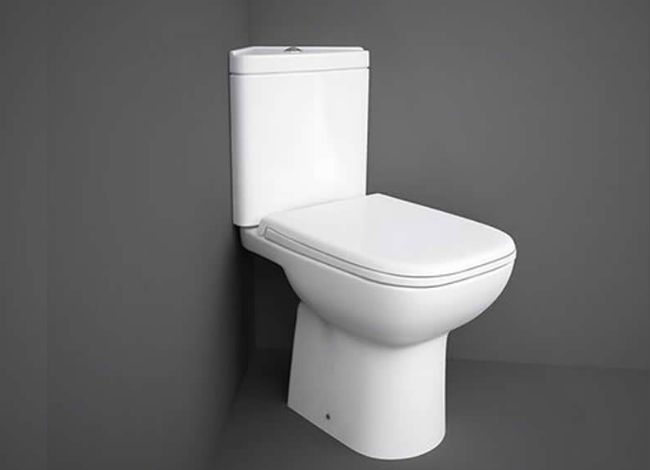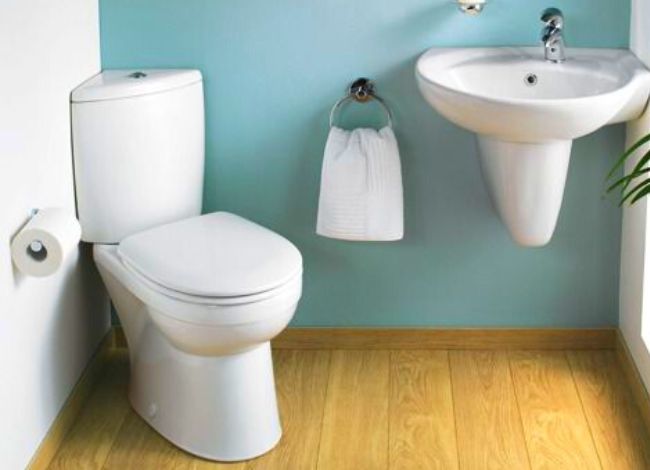With the rising cost of land and the ever-shrinking size of urban apartments, homeowners and renters alike are constantly seeking innovative ways to optimize their living spaces. One such innovation that has gained immense popularity in recent years is the corner toilet. Compact, stylish, and efficient, corner toilets offer a practical solution for modern bathrooms where space is limited but functionality is essential.
In this comprehensive guide, we’ll explore everything you need to know about corner toilets—including their unique design, installation requirements, pros and cons, and how they compare to traditional toilets. By the end, you’ll understand why these triangular space-savers could be the perfect addition to your bathroom.
What is a Corner Toilet?
A corner toilet, often referred to as a triangle toilet, is a specially designed toilet unit that fits neatly into the corner of a bathroom. Unlike standard toilets, which are typically installed along flat walls, corner toilets make use of underutilized corner space, freeing up valuable room for other fixtures or simply enhancing the feeling of openness in a small bathroom.
The standout feature of a corner toilet is its triangular-shaped water tank. This design allows the tank to nestle perfectly into a 90-degree corner, giving it a snug, integrated appearance. While the toilet bowl itself functions like a standard model—complete with the same flushing mechanisms and plumbing connections—it’s the tank shape and placement that makes all the difference.
Corner toilets come in two main designs:
- Floor-mounted corner toilets (also known as close-coupled toilets)
- Wall-mounted corner toilets
Both types are engineered for space optimization, and the choice depends on your plumbing layout and aesthetic preferences.
Who Should Consider a Corner Toilet?
Corner toilets are not just a novelty—they’re a practical solution for a wide variety of situations:
- 🏠 Small homes or apartments where bathroom space is tight
- 🚿 Half-baths or powder rooms where only a toilet and sink are needed
- 🧱 Basement bathrooms with awkward layouts or limited plumbing options
- 🛠️ Bathroom remodels where maximizing usable space is a priority
- ♿ Accessibility-focused bathrooms needing more maneuvering room
If you’re working with a small or oddly shaped bathroom, or simply want to free up floor space for other fixtures, a corner toilet might be the ideal choice.
How Much Space Does a Corner Toilet Save?
 One of the biggest advantages of a corner toilet is its ability to save up to 30% of space compared to traditional toilet setups. Let’s break that down:
One of the biggest advantages of a corner toilet is its ability to save up to 30% of space compared to traditional toilet setups. Let’s break that down:
- A standard toilet requires about 3 feet 9 inches of space from the wall.
- A corner toilet only needs around 2 feet 9 inches of clearance.
That’s one foot of saved space, which can make a huge difference in compact bathrooms—enough to fit a small vanity, cabinet, or simply allow for easier movement.
This efficient use of space not only makes the bathroom more functional but also more comfortable, open, and accessible.
Required Dimensions and Installation Guidelines
Installing a corner toilet is relatively straightforward but does require careful planning to ensure the toilet fits well and meets building codes. Here are the key dimensions and spacing guidelines to follow:
Minimum Recommended Dimensions:
| Measurement | Value |
|---|---|
| Bathroom width | At least 66 inches |
| Distance from side wall to toilet | 26–28 inches |
| Distance from front wall to toilet | 30–32 inches |
| Clearance for comfortable use | 18 inches minimum |
| Sink distance from the toilet | 18 inches (both sides) |
Additionally, the rough-in size (the distance from the finished wall to the center of the toilet flange) is typically 12 inches, which is standard for most toilets. However, always check the rough-in requirements for your specific model.
Plumbing Considerations:
- The water supply line should be positioned appropriately in the corner.
- The drain pipe may require minor adjustments, especially if converting from a standard toilet setup.
- For wall-mounted models, reinforced wall framing may be necessary to support the unit’s weight.
If you’re unsure about installation, consulting a licensed plumber is always recommended.
Benefits of Installing a Corner Toilet
Corner toilets aren’t just a space-saving novelty—they come with several real-world benefits that can enhance the overall bathroom experience.
1. Maximized Floor Space
This is the most obvious benefit. By utilizing corner space that would otherwise be wasted, you free up room for other essentials like vanities, cabinets, or even a walk-in shower.
2. Modern and Stylish Design
Corner toilets have a sleek, minimalist look that complements modern and contemporary bathrooms. The triangular tank adds a unique architectural element that can enhance visual appeal.
3. Ideal for Small Bathrooms
In tight spaces where every inch counts, a corner toilet makes the room feel more open and less cluttered. This is especially important in powder rooms or half baths where floor space is minimal.
4. Efficient Water Usage
Most corner toilets are built with modern dual-flush systems, allowing you to choose between low and high-volume flushes. This helps conserve water and lower utility bills.
5. Easy to Clean and Maintain
With fewer surrounding fixtures and clear floor space, corner toilets are often easier to clean than traditional toilets cramped between two walls.
6. Cost-Effective Upgrade
While slightly more expensive than standard toilets, corner toilets don’t require extensive remodeling. The added space and functionality can make them a worthwhile investment.
Potential Drawbacks to Consider
While corner toilets offer many advantages, it’s important to consider a few potential downsides:
- Limited Models Available: Fewer design and color options compared to standard toilets.
- Slightly Higher Cost: Due to specialized design and limited demand.
- Complex Plumbing Adjustments: May require repositioning of water lines or drain pipes.
- Installation Challenges: Not all corners are perfectly square or suitable for toilet installation.
These issues are minor but worth considering during the planning phase.
Materials and Durability
Most corner toilets are made from vitreous china (porcelain), a glazed ceramic that’s durable, easy to clean, and resistant to stains and bacteria. The glaze ensures that the toilet retains its sheen for years with minimal maintenance.
When shopping, look for models with soft-close lids, dual-flush buttons, and eco-friendly certifications for the best combination of comfort, function, and sustainability.
Wall-Mounted vs. Floor-Mounted Corner Toilets
When choosing a corner toilet, one of the first decisions you’ll face is whether to go with a wall-mounted or floor-mounted model.
Wall-Mounted Corner Toilets:
- Appear modern and futuristic
- Save even more floor space
- Easier to clean underneath
- Require wall reinforcement and concealed plumbing
- Generally more expensive
Floor-Mounted Corner Toilets:
- Easier to install
- More traditional look
- No need for concealed plumbing
- Lower cost
- Slightly larger footprint
Choose the one that best fits your bathroom size, budget, and style preference.
Corner Toilet vs. Standard Toilet: Which One Should You Choose?
Here’s a quick comparison to help you decide:
| Feature | Corner Toilet | Standard Toilet |
|---|---|---|
| Space-saving | ✅ Yes | ❌ No |
| Installation complexity | Moderate | Easy |
| Aesthetic appeal | Modern & Unique | Common & Traditional |
| Ideal for small bathrooms | ✅ Yes | ❌ No |
| Price range | Slightly higher | Wide range |
| Availability | Limited options | Extensive selection |
If space optimization and modern design are top priorities, go for a corner toilet. For larger bathrooms or if budget is a primary concern, a standard toilet may suffice.
Tips for Buying a Corner Toilet
- Measure your space accurately before shopping.
- Choose a model with a dual flush for water savings.
- Check the rough-in size to ensure proper fit.
- Look for soft-close seats to reduce noise.
- Consider matching the toilet with a corner sink to create a cohesive layout.
- Don’t forget to check warranty coverage and return policy.
- Read online reviews to gauge performance, durability, and comfort.
Final Thoughts
A corner toilet is a smart and stylish solution for homeowners looking to maximize bathroom space without sacrificing comfort or functionality. With their sleek triangular design, space-saving capabilities, and modern features, corner toilets are an ideal choice for small bathrooms, powder rooms, or any space where efficiency matters.
While installation might require a bit more planning and customization, the payoff is well worth it. You’ll enjoy a more open, functional, and visually pleasing bathroom—plus the added value it brings to your home.
So if you’re building, remodeling, or upgrading a bathroom, consider choosing a corner toilet. It’s an investment in both form and function that you won’t regret.
We are really lucky to have a hard-working, multi-skilled plumber on our team. Collin D. Gallegos, a professional plumber who has worked with us since 2012, is an expert in vent, septic, and drainage systems. He is a Certified Master Plumber and has worked on various commercial plumbing projects. He usually helps our readers resolve plumbing and pipe-related issues with a proper DIY troubleshooting and repair guide.